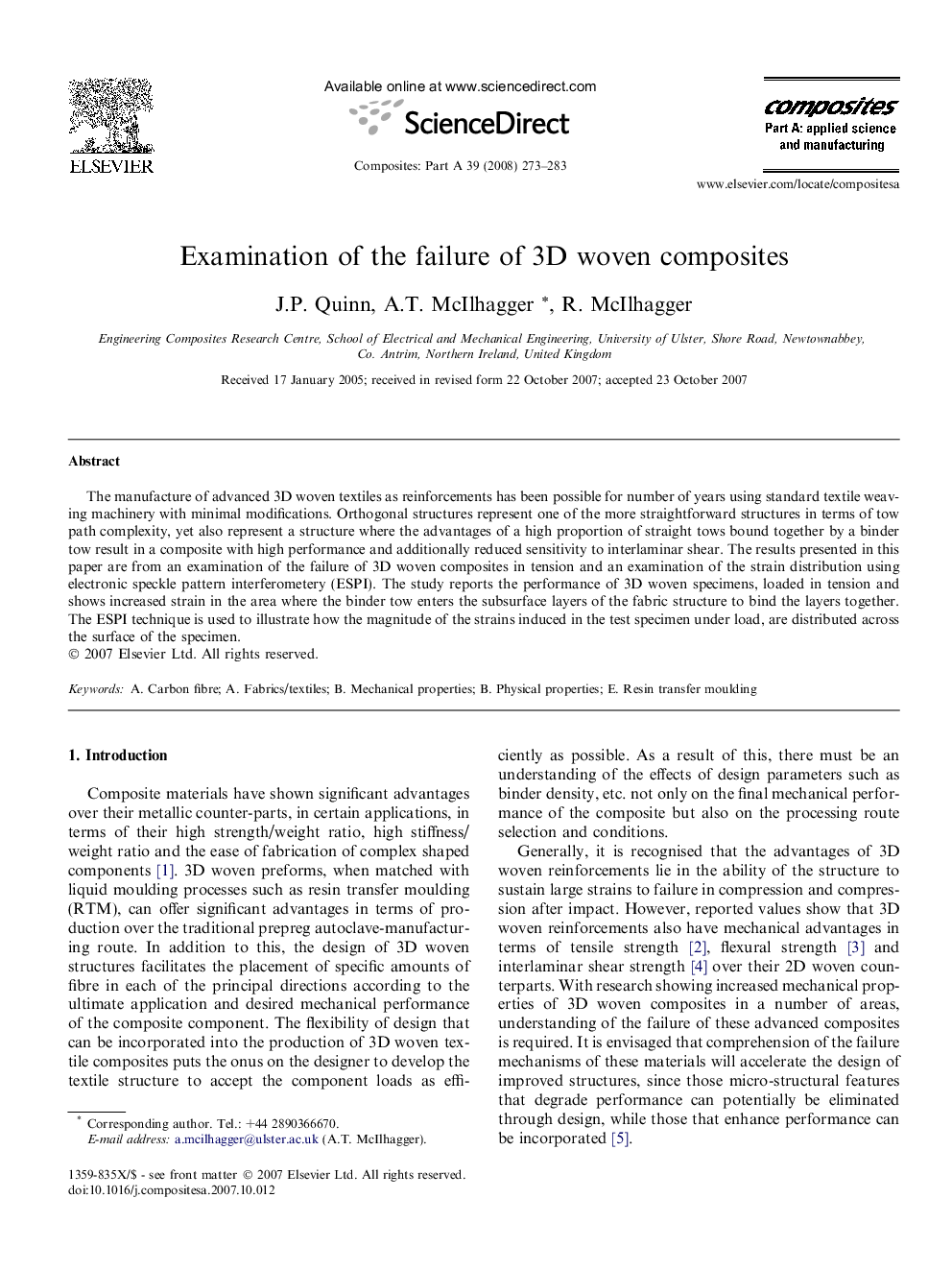| کد مقاله | کد نشریه | سال انتشار | مقاله انگلیسی | نسخه تمام متن |
|---|---|---|---|---|
| 1467453 | 990102 | 2008 | 11 صفحه PDF | دانلود رایگان |

The manufacture of advanced 3D woven textiles as reinforcements has been possible for number of years using standard textile weaving machinery with minimal modifications. Orthogonal structures represent one of the more straightforward structures in terms of tow path complexity, yet also represent a structure where the advantages of a high proportion of straight tows bound together by a binder tow result in a composite with high performance and additionally reduced sensitivity to interlaminar shear. The results presented in this paper are from an examination of the failure of 3D woven composites in tension and an examination of the strain distribution using electronic speckle pattern interferometery (ESPI). The study reports the performance of 3D woven specimens, loaded in tension and shows increased strain in the area where the binder tow enters the subsurface layers of the fabric structure to bind the layers together. The ESPI technique is used to illustrate how the magnitude of the strains induced in the test specimen under load, are distributed across the surface of the specimen.
Journal: Composites Part A: Applied Science and Manufacturing - Volume 39, Issue 2, February 2008, Pages 273–283